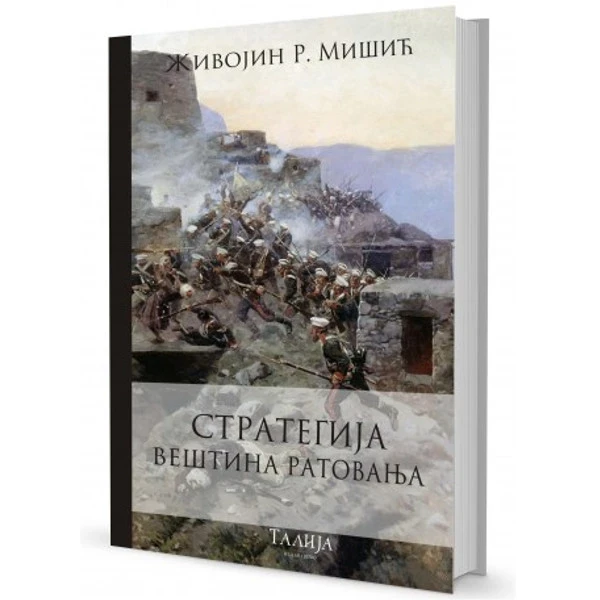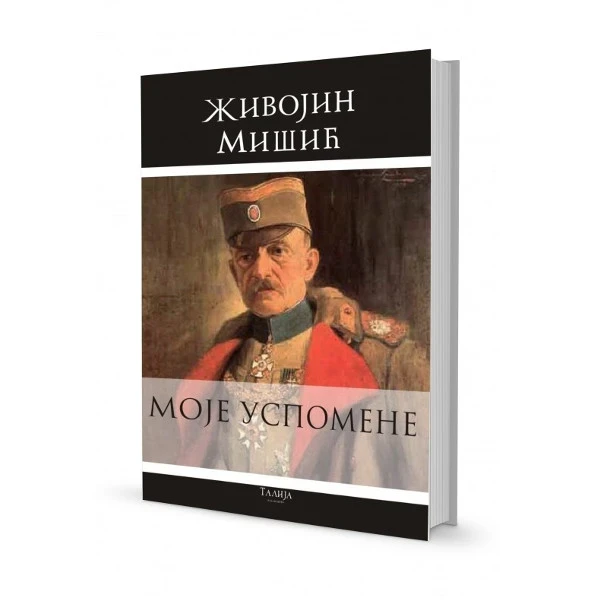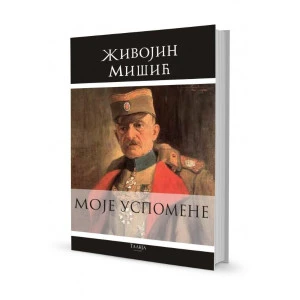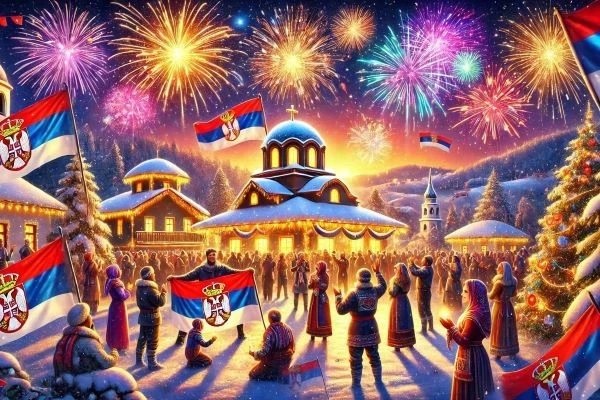Zivojin Misic - military leader, duke and hero of Serbian history
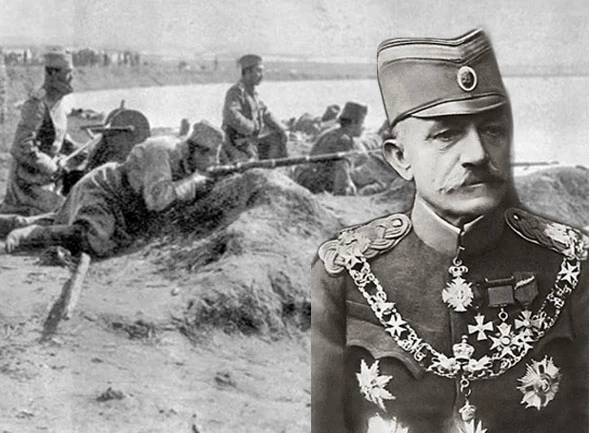
Back in 1855, in the village of Struganik near Valjevo, a boy was born as the thirteenth child. At that time, in such a large family, the gift was for the children to stay alive and reach old age. Nobody thought that one child was the future famous military leader and hero of Serbian history. Zivojin Misic.
Duke Mišić started his early schooling in the village of Ribnica through a four-year course of shepherding and guide oxen. He finished the first two grades of primary school there, and in 1867 he continued his education in Kragujevac, where one of his brothers served as an officer.
After completing six grades of high school, Mišić enrolled in the Military Academy, and his service and service to Serbia officially began.
War training of Živojin Mišić
Vojvoda Mišić began his war experience in the Serbian-Turkish wars, both theoretically and on the battlefield. With all his previous experience, Zivojin Misic was aware that Serbia could not get rid of Turkish slavery with average weapons. That is why, after he came to the position of Assistant Chief of Staff of the Supreme Command, he directed all his abilities to arming the army.
A real soldier - at the wrong time
As Colonel Zivojin Misic said at the time, he welcomed the May coup as commander of the Drina Division, after the murder of Aleksandar Obrenovic, he was suspected by the conspirators and retired.
With a small retirement, he was dismissed from the service, he moved to Prokuplje where he wrote and published his professional lectures, from which he managed to improve his material status.
Reactivation of Živojin Mišić
When it was already obvious that the Balkan Alliance would be created for the purpose of liberation from the Turks, an offer for reactivation came to Zivojin Misic.
As Vojvoda Putnik knew how to appreciate the expertise of Zivojin Mišić, he demanded that he reactivate himself and appoint him as his assistant. Mišić accepted the offer on the condition that his previous act be returned to him. With short-term protests, Mišić received rank and found himself in the army again in the position of assistant chief of staff of the Supreme Command.
He and Putnik worked out a plan of operations against Turkey, as well as a plan of defense against a possible Austro-Hungarian attack.
The Battle of Kumanovo brought Živojin Mišić the rank of general. Special recognition was given to Duke Živojin Mišić for his victory in Bregalnica. Mišić knew the soul of a Serbian peasant and a Serbian soldier, which contributed to the heavy defeat of the Bulgarians and a new Serbian victory.
However, after the suppression of the Albanian uprising in 1913, the famous Duke retired for the second time.
After the Sarajevo assassination, there was no doubt that war would break out immediately. Thus, reactivated again, the rank and rank were returned to Živojin Mišić.
Vojvoda Mišić in the First World War
As Duke Putnik was in treatment and Putnik was replaced by General Stepa Stepanović, Mišić was given the opportunity to realize the plans he made together with Duke Putnik independently.
Since the commander of the First Army, General Petar Bojović, was wounded on the Drina, he had to temporarily withdraw from that position. Vojvoda Putnik sent his assistant to receive the already disorganized First Serbian Army. From there, Mišić gradually withdrew the tired Serbian troops of the First Army from position to position and put them in order. And when he saw that it would not give results, he decided to retire to rest and feed the troops there, to supply them with ammunition and psychologically prepare for the offensive.
At that time, the imminent fall of Kragujevac and the capitulation of Serbia were expected in Serbia. A session of the Serbian government has been scheduled in Nis to decide whether the war can continue. Three days before this session, Mišić informed Putnik that his army was launching a counterattack.
For this brilliant and successful operation, the commander of the First Army received, as the third in a row, the highest rank in the Serbian army, the rank of duke.
Against Serbia, there will be fresh German and Bulgarian forces together with the Austro-Hungarians, determined to define the destruction of the Balkan Kingdom of Serbia and Montenegro on this occasion. The celebrated German general, who held several victorious titles, August von Mackensen, was appointed commander-in-chief of the enemy forces against Serbia-Montenegro.
How much he appreciated Serbia and the Serbian soldier is best seen in the monument that still exists in Kosutnjak today, and on which it is written: "To my brave Serbian opponent - Mackenzen".
After fierce resistance in 1915, during Mišić's withdrawal, the First Army was given the delicate task of defending the Serbian left wing while maintaining contact with Montenegrin troops and securing the Ibar Valley.
The duke arrived on the Adriatic coast physically completely exhausted, so he was sent for some time to recover in Italy and France, where the French showed him the honor of visiting the western front. During that time, the First Serbian Army was led by General Milos Vasic, but when the attack on Kajmakcalan and the first offensive against the homeland were being prepared, in 1916, Duke Misic was urgently called from vacation and became the head of the First Army again.
After General Bojović resented the leadership of the Allied Supreme Command, General Petar Bojović was appointed Commander of the First Army and Duke Živojin Mišić was appointed Chief of Staff of the Serbian Supreme Command.
When the Supreme Command was demobilized after the end of the war in 1918, Mišić was appointed Chief of the General Staff, a position in which he died on January 20, 1921.
Interesting facts about Duke Živojin Mišić:
Duke Živojin Mišić began to write his memoirs in his sickbed. Unfortunately, he finished only the chapters about his childhood, about the wars against Turkey and Bulgaria in the last century, about his schooling and progress.
Vojvoda Mišić is one of the three Serbs who wore Karađorđe's star with swords of all ranks - I, II, III and IV I and is the only Serb who received the highest order: the Order of St. Michael and George of the first degree with a necklace. Vojvoda Mišić is the only holder of the order who was enabled to return neither the order nor the necklace even after his death.
The Serbian army called him Žućko.
Visit our website and provide your copy of one of the biographical works of Živojin Mišić or a colorful statue of the great military leader Živojin Mišić
Related products
Read also
Who was Saint Sava and what was his contribution?
"Saint Sava: A Beloved Serbian Saint with a Rich Legacy and Cultural Significance"
…Serbian New Year: Tradition, Customs and How to Celebrate it
The Serbian New Year, also known as the Orthodox New Year, is celebrated on…
Gifts Inspired by Serbian Culture: Authentic Ideas for the Holidays
The holidays are a time of giving, and finding the perfect gift is often a challenge.…
Traditional Serbian Christmas Customs: How to Cultivate Them in Modern Times?
Christmas is the most joyous holiday in Orthodox Christianity, a time when families…
How to Bring the Spirit of Orthodox Tradition into Your Home This Winter?
Winter is the perfect time to bring warmth, togetherness and the spirit of Orthodox…
Serbian Souvenirs: Perfect New Year's Gifts for All Tastes
New Year is the time of giving, and what is more beautiful than a gift that…
How to stay productive and not waste an entire day on Black Friday shopping
Black Friday is a day full of amazing discounts, but it can easily become exhausting…
Folk Beliefs and Customs for Saint Aranđel - Assembly of Holy Angels
Saint Michael the Archangel, who is celebrated…
Folk Beliefs and Customs for Đurđić - Glory of St. George
Đurđić, the feast of St. George, celebrated on November 16, is one of the most…
Smart shopper's guide: How to make the most of Black Friday
Black Friday is the most famous shopping event of the year that offers huge…
The history of Black Friday: How it all began and why it continues
Black Friday, known as the biggest discount day of the year, today attracts…
Gifts for Children in the Diaspora: How to Nurture the Connection with the Language, Culture and Tradition of Serbia
Children who grow up in the diaspora face specific challenges - they lose contact…

Apply for newsletter
Sign up for the Serbianshop newsletter and get a 10% discount.


